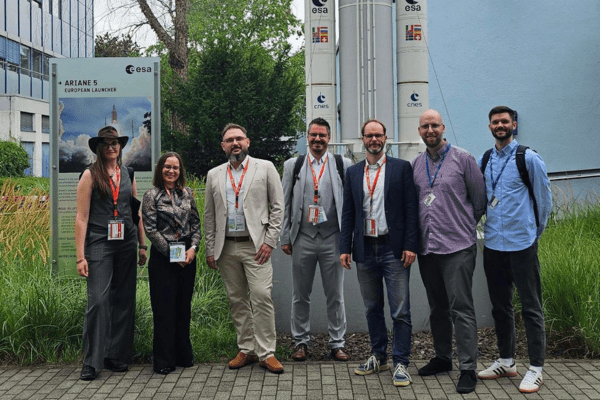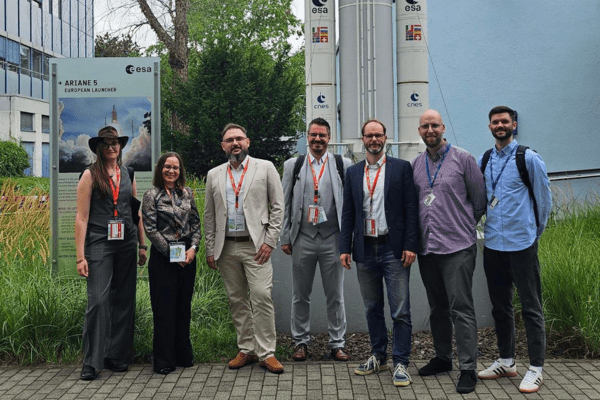On July 24th, 2025, Sybilla Technologies had the privilege to close the final chapter of the EON project – the European Optical Network – during a summary meeting with the European Space Agency (ESA) and consortium partners. The project, launched to demonstrate a fully operational, client-driven, end-to-end optical tracking network, has not only achieved its goals but also established a robust technological foundation for the future of space safety in Europe.
As the coordinating company and prime contractor, Sybilla Technologies led a consortium of elevenEuropean entities – from software experts to sensor operators – working together towards a single objective: building an autonomous, multi-sensor network capable of handling real-time tracking, data delivery, and orbit determination for high-value space assets.
From Ambition to Implementation
EON set out to answer a fundamental question: can a diverse network of optical sensors be unified under a common operational framework that meets the increasing demands of the SSA/SST ecosystem?
The answer, after months of intensive collaboration, engineering, and testing, is a resounding yes.
The system designed within EON:
- Enables observation scheduling, tasking, and processing in an automated and reliable manner
- Integrates Sybilla’s ABOT system and Astrometry24.NET pipeline to orchestrate operations with minimal manual input
- Supports key services such as cataloguing, orbit determination, maneuver confirmation, fragmentation analysis, and neighborhood monitoring
- Delivers validated, high-quality products like TDMs, light curves, ephemerides, and covariance envelopes
The entire end-to-end process – from initial user request to data delivery and service reporting – has been successfully tested, with the system supporting real-time operations throughout the final phase of the project.
A Network Ready for Real-World Use
EON wasn’t just a technical demo. It was the beginning of something way bigger.
Dozens of objects in geostationary orbit were catalogued and tracked. Collision avoidance scenarios were simulated. Light curves and photometric data were gathered for high-interest targets like the Ariane-5 upper stage and the re-entry of Cluster II FM6.
Data quality was ensured through rigorous calibration and validation routines, and system resilience was tested under changing weather conditions across geographically distributed sensors.
Thanks to the contribution of partners such as Okapi:Orbits, Vyoma, Aristotle University of Thessaloniki, Cilium Engineering, AstroTech KFT, and others – as well as the unwavering technical support from ESA – EON demonstrated what’s possible when the European space community comes together around a shared mission.
Strengthening Europe’s Space Capabilities
Projects like EON matter. They matter for companies like Sybilla Technologies, which build the digital infrastructure behind space operations. They matter for ESA, which plays a pivotal role in fostering collaboration, standardization, and innovation across member states. And they matter for Europe as a whole, which faces an increasingly crowded and contested orbital environment.
EON has proven that Europe can design and deploy sophisticated, scalable, and independent optical observation capabilities. It has shown that operational excellence can be achieved through cooperation, automation, and shared standards.
We extend our deepest thanks to everyone involved in the project – and especially to Sybilla’s Team and Karolina Werengowska, Head of Project Management at Sybilla Technologies, whose leadership helped steer the project from vision to successful delivery.

